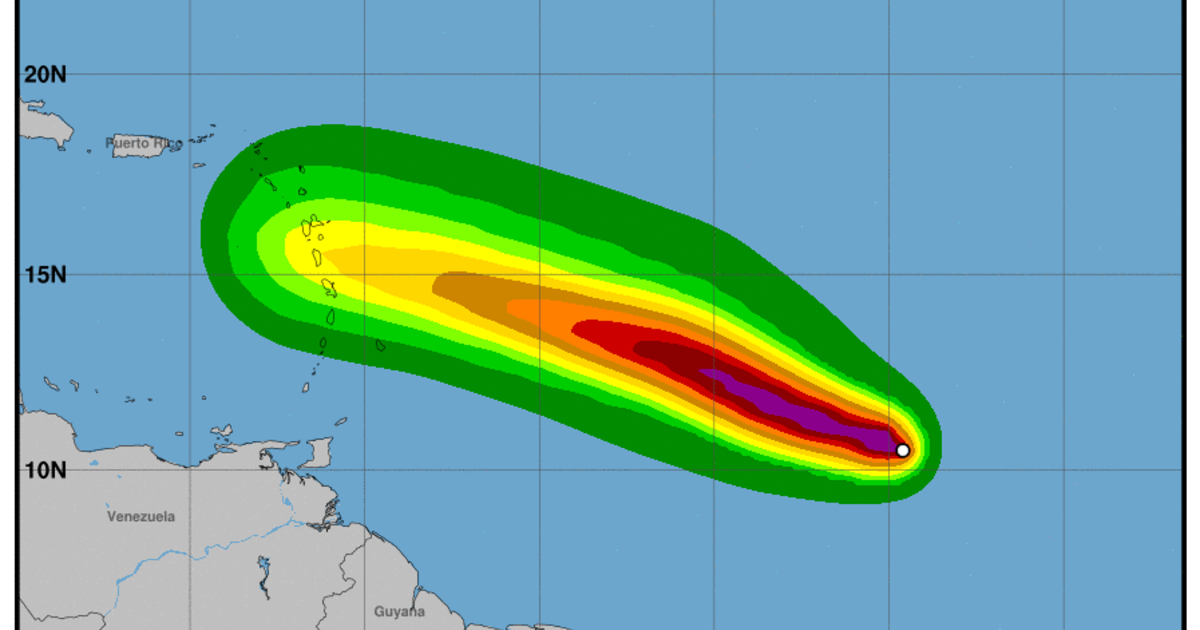Beryl’s Projected Path: Meteorological Analysis

Beryl projected path – Beryl’s projected path is influenced by a complex interplay of meteorological factors, including atmospheric pressure systems, wind patterns, and ocean currents. Understanding these factors is crucial for accurate forecasting and timely warnings.
As Tropical Storm Beryl churns in the Atlantic, its projected path remains uncertain. Forecasters are monitoring the storm closely, as it could potentially impact Puerto Rico and other Caribbean islands. The storm’s path could shift significantly in the coming days, so residents in potentially affected areas are urged to stay informed and prepare accordingly.
Atmospheric Pressure Systems
- Beryl’s movement is primarily driven by pressure gradients, with the storm moving from areas of high pressure towards areas of low pressure.
- High-pressure systems, characterized by clockwise wind circulation in the Northern Hemisphere, tend to push Beryl away from their centers.
- Low-pressure systems, with counterclockwise wind circulation, draw Beryl towards their centers, potentially intensifying the storm.
Wind Patterns
- Beryl’s path is also influenced by prevailing wind patterns, such as trade winds and jet streams.
- Trade winds, which blow from east to west near the equator, can steer Beryl in a westward direction.
- Jet streams, high-altitude currents of fast-moving air, can influence Beryl’s movement and intensity by providing favorable conditions for storm development or weakening.
Ocean Currents
- Ocean currents can affect Beryl’s speed and direction by providing a source of energy or acting as a barrier.
- Warm ocean currents, such as the Gulf Stream, can provide energy for Beryl’s development and increase its intensity.
- Cold ocean currents, such as the Canary Current, can weaken Beryl by reducing its access to warm water and energy.
Climate Change Impact
Climate change is expected to impact Beryl’s projected path in several ways:
- Rising sea levels may lead to increased storm surge, potentially causing more severe flooding and damage along coastal areas.
- Changes in wind patterns and ocean currents could alter Beryl’s movement and intensity, making it more difficult to predict its path.
- Increased frequency and intensity of tropical storms and hurricanes due to climate change may lead to more frequent occurrences of Beryl-like storms.
Projected Impacts of Beryl

Hurricane Beryl poses significant threats to coastal areas along its projected path. The storm’s powerful winds, heavy rainfall, and storm surge can cause extensive damage to infrastructure, property, and the environment.
Coastal Impacts
Coastal areas are particularly vulnerable to the impacts of Beryl. Storm surge, a wall of water pushed ashore by the storm’s winds, can inundate low-lying areas, causing flooding and erosion. The surge can also damage or destroy buildings, roads, and other infrastructure.
In addition to storm surge, Beryl’s heavy rainfall can lead to inland flooding. This flooding can damage homes and businesses, displace residents, and disrupt transportation and communication.
The storm’s strong winds can also cause significant damage. Winds can topple trees and power lines, causing power outages and downed trees. They can also damage buildings and other structures.
Vulnerable Populations and Infrastructure
Certain populations and infrastructure are particularly vulnerable to the impacts of Beryl. These include:
- Low-income communities
- Elderly residents
- People with disabilities
- Critical infrastructure, such as hospitals, schools, and power plants
Economic and Environmental Consequences, Beryl projected path
The impacts of Beryl can have significant economic and environmental consequences. The storm can damage or destroy property, disrupt businesses, and lead to job losses. It can also damage natural resources, such as coral reefs and wetlands.
The economic costs of Beryl can be substantial. The storm can cause billions of dollars in damage, and it can take years for affected communities to recover.
The environmental consequences of Beryl can also be significant. The storm can damage or destroy coral reefs, wetlands, and other ecosystems. These ecosystems provide important services, such as filtering water, providing food and shelter for wildlife, and protecting shorelines from erosion.
Preparedness and Mitigation Measures: Beryl Projected Path

In the face of an approaching hurricane, comprehensive preparedness and mitigation measures are crucial to safeguard communities and minimize potential damage. These measures should be tailored to the specific characteristics and projected path of the storm, ensuring a coordinated and effective response.
Evacuation Plan and Emergency Contact Information
Evacuation routes and shelter locations should be clearly established and widely disseminated to residents in Beryl’s projected path. Evacuation plans should account for different scenarios, including the availability of transportation, potential road closures, and the needs of vulnerable populations. Emergency contact information for local authorities, emergency services, and utility companies should be readily accessible.
Mitigation Action Plan
A detailed action plan is essential for mitigating the impact of Beryl. This plan should include measures for flood control, debris management, and infrastructure protection. Flood control measures may involve constructing or reinforcing levees, clearing drainage channels, and implementing flood warning systems. Debris management plans should Artikel procedures for the removal and disposal of debris after the storm, including the identification of designated disposal sites. Infrastructure protection measures may include securing critical infrastructure, such as power lines, communication networks, and water treatment facilities.
Beryl’s projected path takes it near Puerto Rico, where more information about Beryl’s impact on Puerto Rico can be found. After passing Puerto Rico, Beryl is expected to continue on its current track.